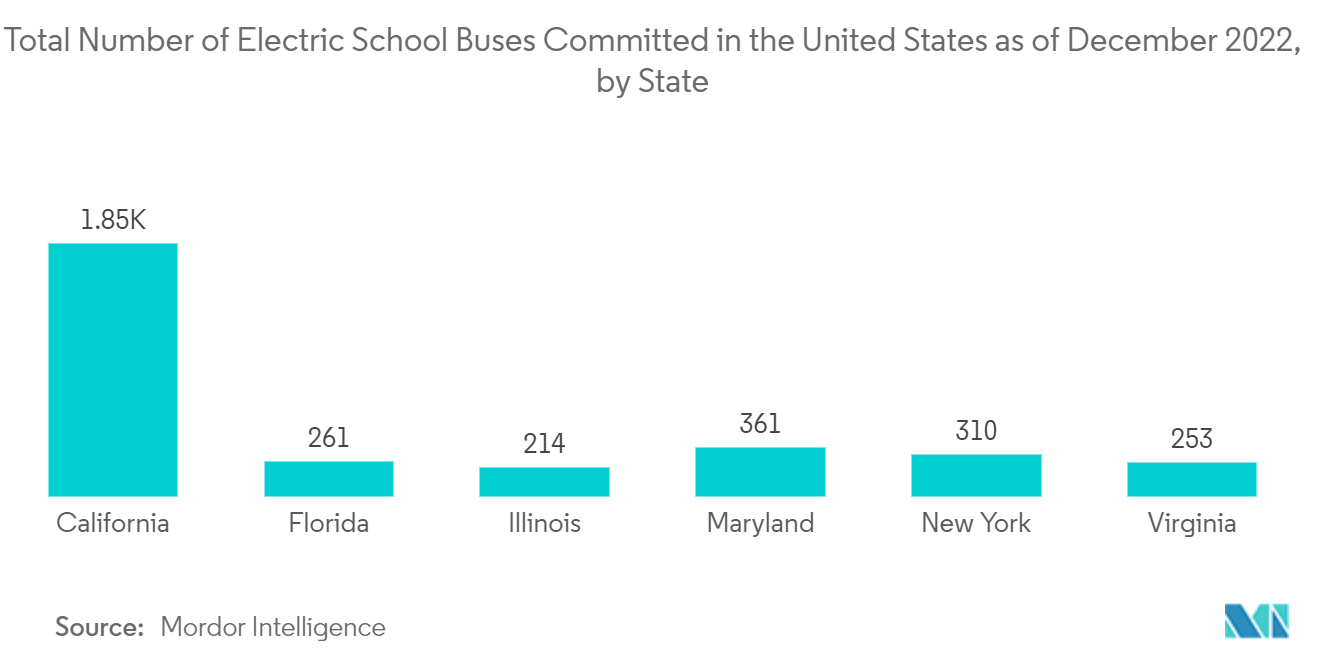Market Trends of United States School Bus Industry
Potential Shift Toward Adoption of Electric Buses to Drive the Market
Fuel constitutes a major part of the operating cost of any vehicle. With the increasing fuel costs, using an electric bus for public transport reduces the fuel cost, other upfront costs, and the total cost of ownership. By 2030, the prices for electric buses are expected to come down to that of diesel-engine buses. Electric buses help reduce 81-83% of the maintenance and operating costs compared to diesel-engine buses.
The rise in general awareness about air pollution, climate change, and the increasing diesel prices over the years are some of the reasons that incentivize most state and city transport authorities. It is to increasingly accommodate clean public transport solutions in their regional development plans. Electric buses offer more comfort to travelers compared to gasoline or diesel buses. Unlike traditional diesel buses, the NVH levels in electric buses are minimal, providing enhanced comfort to passengers.
Vehicle manufacturing companies across the country developed new products to cater to the demands of different end users. For instance;
- In January 2022, BYD introduced an electric school bus model in North America. The battery-operated electric bus includes a range of up to 140 miles on a single charge.

Rising Investments Anticipated to Drive the Market
The government took positive steps in raising the bus demand in the United States. Being one of the key modes of public transportation, the government announced several plans to boost the demand for electric buses in the United States. Incentivizing the purchase of electric vehicles or the modernization of the current fleet is also a significant contributing factor to the rise in the number of electric bus sales throughout the country. For instance,
- In June 2023, the US Department of Transportation announced a grant program worth approximately USD 1.7 billion for the purchase of zero-emission buses, with funds going to transit projects in 46 states and territories.
The EPA and NHTSA in the United States proposed implementing the Safer Affordable Fuel-Efficient (SAFE) vehicles rule from 2021 to 2026. The rule could establish corporate average fuel economy and greenhouse gas emissions standards for passenger and commercial vehicles. OEMs are required to sell a certain number of clean and zero-emission vehicles (electric, hybrid, and fuel cell-powered commercial and passenger vehicles) under the Zero-emission Vehicles (ZEV) Program. The country's ZEV plan aims to put 12 million ZEVs (including buses) on the road by 2030.
Furthermore, with the introduction of new initiatives like free travel in public transit, the footfall of the public in the bus network of various cities is anticipated to rise in the coming time and drive the need for a higher number of buses to be used for transport. For instance,
- In July 2023, major cities in the United States, including Raleigh, Virginia, and Boston, are testing zero-fare public transportation routes, drawing public attention to the use of these environmentally friendly modes of transportation.


